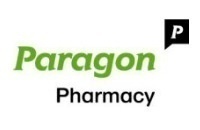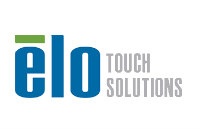ERP Solutions: Creating Customer Loyalty at Every Touch Point
We live in a world growing increasingly more complex for retailers. As customers become more aware of the technological capabilities of their own consumer technology (handheld devices and computers), their expectations for a personalized shopping experience has increased.
In an effort to remain competitive in a world of waning buyer loyalty, many retailers are undergoing a technological metamorphosis. Several organizations have already implemented successful ERP technology to improve point of sale, exceed buyer expectations, and brand the shopping experience.
In this article, you’ll discover how a customer loyalty can be created through ERP solutions at every touch point of the buying process.
Inventory Management
 Most customers expect a store clerk to – at minimum – know what products they have on the store floor and in the back room. However, inventory management is a pain point that affects almost all retailers.
Most customers expect a store clerk to – at minimum – know what products they have on the store floor and in the back room. However, inventory management is a pain point that affects almost all retailers.
How many of us have seen a clerk disappear into the store room for 10 minutes only to come back empty handed? Have you ever left one store for a competitor’s because they didn’t have the product you were looking for? The time it takes to check on inventory, the lack of customer care that punctuates the process, and the frustration when the product is unavailable makes the average stock-check experience dissatisfying for the customer. Fortunately, technological improvements are building transparency and breaking down the information silos that have formerly trapped retailers. Today, a retailer can use ERP to deliver a stock check that increases customer satisfaction and reduces time to purchase.
The true gift of inventory management through an ERP system is its ability to empower customer-facing company representatives to turn a situation that is potentially disadvantageous into a new opportunity. For example, after discovering a pair of shoes weren’t in stock, the average customer might leave the store without a single purchase. However, a clerk working at a store equipped with an ERP solution can scan the product, locate the product within the supply chain, and ship it directly to the customer’s home free of charge. If the store is also equipped with mobile POS devices, the clerk can perform this operation without ever leaving the customer’s side. Instead of experiencing disappointment and feeling like they’ve wasted their time, the customer experience instant gratification and will receive their desired item without visiting a competitor.
Beyond-the-Label Product Information
 Today’s customer wants retail staff members to personalize the experience beyond the product label. A customer at a wine and beverage retailer, for example, may expect a clerk not only to sell the wine, but also to convey information regarding complementary food products, flavor notes, or the Wine Spectator score of the product.
Today’s customer wants retail staff members to personalize the experience beyond the product label. A customer at a wine and beverage retailer, for example, may expect a clerk not only to sell the wine, but also to convey information regarding complementary food products, flavor notes, or the Wine Spectator score of the product.
With a fully integrated ERP system in place, retailers can give their staff end-to-end visibility into a product instantaneously. After one database call, the staff member can answer probing customer questions in real time. In larger retail stores where staff members might not be within view of the customer at all times, a customer can access the information themselves by scanning the product’s barcode. With information right at their fingertips, customers can purchase the exact products suited to their needs with certainty. Additionally, by knowing that only this retail business offers such detailed product data, the chances that they will return for a repeat visit are instantly higher.
Cross-Selling and Up-Selling
As customers grow to expect more personalized retail experiences, the concept of cross-selling is maturing far beyond the old McDonald’s adage of, “Do you want fries with that?”
With an ERP Solution in place, retailers are primed to turn a cross-selling and up-selling opportunity into a service that provides true value for the customer. For example, if an ERP system was successfully implemented at an electronics store, the clerk could scan the product and alert the customer to opportunities specific to the item they are buying.
When a product is scanned, a data call is performed that can prompt the clerk to mention information pertaining to:
- Warranties that apply to the product
- Accessories the customer might need to operate the product (batteries, power cords, adapters)
- Special sales and bundling offers
- Newly available pre-orders for similar products
This ensures that the customer is purchasing everything they need to enjoy their item while boosting profits for your retail business.

Whether the service is offered on a mobile level or at point of sale in a checkout lane, ERP makes it easy to build and improve buying pathways and increase customer happiness.
An ERP solution helps retailer to think ahead and meet higher expectations of customer service while attaining personalized interactions between new and existing customers. A happy customer is a loyal customer.
RECENT POSTS
 Magstar Goes Enterprise Wide at Paragon PharmaciesMagstar Total Retail has gone live enterprise-wide at Paragon [...]
Magstar Goes Enterprise Wide at Paragon PharmaciesMagstar Total Retail has gone live enterprise-wide at Paragon [...] 4 Reasons Why 65% of Retailers are Embracing MobilityMobility, whether it be at the point of sale [...]
4 Reasons Why 65% of Retailers are Embracing MobilityMobility, whether it be at the point of sale [...] Magstar Certifies Elo Touchscreens for Retail POS SolutionMagstar Inc, provider of enterprise resource planning (ERP) retail [...]
Magstar Certifies Elo Touchscreens for Retail POS SolutionMagstar Inc, provider of enterprise resource planning (ERP) retail [...]